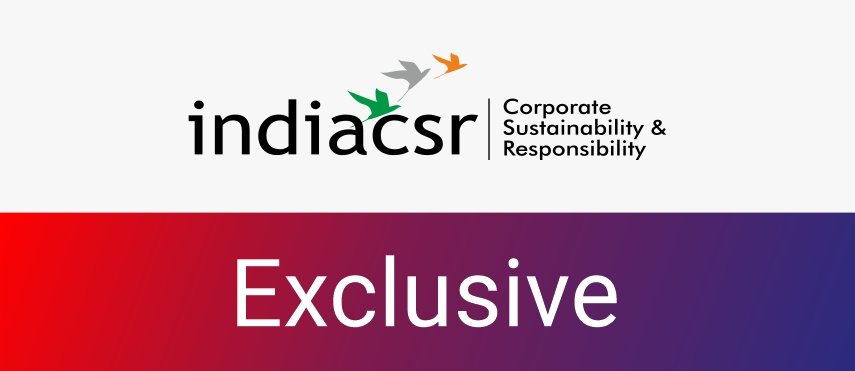The lack of female representation in key management roles and the higher turnover rate among female employees further underline the need for a more inclusive and responsive corporate culture.
MUMBAI (India CSR): Axis Bank, a leading player in India’s banking sector, has disclosed facts on workplace sexual harassment cases within the organization for fiscal year 2022-23. Despite their proclaimed commitment to a safe and respectful workplace, the figures raise significant concerns about the bank’s effectiveness in managing these critical issues.
At the start of the year, there were 5 complaints, with 34 new complaints filed, 30 resolved, and 9 remaining pending by the year-end.
In the fiscal year 2021-22, Axis Bank Limited reported 45 instances of sexual harassment.
Rise in Sexual Harassment Complaints
Disturbing Trends
The statistics from the fiscal year 2023 paint a troubling picture:
- Complaints at the start of the year: 5
- New complaints filed: 34
- Complaints resolved: 30
- Pending complaints at year-end: 9
The increase in reported complaints from 5 to 34 within a year could be seen as a positive sign of enhanced awareness and openness within the organization. It indicates a growing trust in the reporting system and a commitment to transparency. However, with 9 complaints still unresolved at the year’s end, this also presents an opportunity to improve and expedite our resolution process, ensuring a more efficient and supportive environment for all.

***
Inadequate Response to a Growing Issue
Insufficient Actions and Policies
While the bank has organized 36 workshops or awareness programs against sexual harassment, this effort seems to pale in comparison to the growing number of complaints. The efficacy of these programs is called into question, given the rising trend in reported incidents. Mere awareness sessions are not enough; there needs to be a stronger, more actionable response.
***
Axis Bank’s Unwavering Commitment
Ensuring a Harassment-Free Workplace for Women
“At the very outset, we would like you to know that Axis Bank has zero tolerance towards Sexual Harassment of Women at Workplace. The bank puts in continuous efforts to create awareness and educate employees in this matter, encouraging them to ‘Speak up’. Various methods like conducting workshops pan India, creating awareness through collaterals etc. are used to inform employees about the various platforms/people they could approach, in order to get their grievances addressed.”
“The Bank has constituted an Internal committee (IC) comprising 56 members, who have been appointed from various regions across the country, as well as a qualified external expert. The IC members have been trained by qualified professionals. Further, trainings are provided to the IC members at regular intervals, in order to keep them abreast about the revision in laws and techniques to handle cases in this regard, the bank informed India CSR

Gender Disparity in Leadership
This lack of female representation in key management roles could contribute to an environment where issues affecting women are not adequately addressed or prioritized.
Representation Matters
The participation, inclusion, and representation of women within the bank’s hierarchy present a notable disparity, especially in the higher echelons of management and decision-making roles. This is evidenced by the data provided on female representation in different levels of the organization:
- Board of Directors: Out of a total of 13 members on the Board of Directors, only 2 are women. This constitutes a 15% female representation at one of the most influential levels in the bank. While this figure does show the presence of women in significant roles, it also highlights that the majority of these key positions are still held by men.
- Key Management Personnel: The disparity becomes even more pronounced at the level of Key Management Personnel. Here, out of 4 individuals, none are women, resulting in a stark 0% female representation. This indicates a complete absence of women in critical leadership roles which are essential for strategic decision-making and guiding the overall direction of the bank.
Here is the table elaborating on the participation, inclusion, and representation of women in different positions within the bank:
| Position | Total Members (A) | Number of Females (B) | Percentage of Females (B/A) |
|---|---|---|---|
| Board of Directors | 13 | 2 | 15% |
| Key Management Personnel | 4 | 0 | 0% |
These statistics reflect a gender imbalance in the bank’s leadership structure, emphasizing the need for more concerted efforts towards gender inclusivity, particularly in top-tier managerial roles. The lack of female representation, especially in key management positions, not only points to a potential underutilization of a diverse talent pool but also raises questions about the inclusivity of the corporate culture and policies within the bank.
***
Employee Turnover: A Symptom of Deeper Issues
The higher turnover rate for female employees could be symptomatic of a work environment that is less than ideal for women, potentially exacerbated by the issues of sexual harassment.
Concerning Patterns
Here is the table displaying the turnover rates for permanent employees and workers over the past three years:
| Fiscal Year | Male (%) | Female (%) | Total (%) |
|---|---|---|---|
| FY 2021 | 18.8% | 20.2% | 19.1% |
| FY 2022 | 31.1% | 33.2% | 31.6% |
| FY 2023 | 34.4% | 35.9% | 34.8% |
The turnover rate for permanent employees and workers at the bank over the past three years reveals significant trends and changes, particularly when viewed through the lens of gender. Here is an elaboration on the provided data:
Fiscal Year 2021
- Male Employees: The turnover rate was 18.8%. This figure is relatively lower compared to subsequent years, indicating a more stable male workforce during this period.
- Female Employees: The turnover rate stood at 20.2%, slightly higher than that of their male counterparts, suggesting a slightly less stable employment situation for female employees.
- Total: The overall turnover rate was 19.1%, showing a somewhat balanced but slightly higher turnover among female employees.
Fiscal Year 2022
- Male Employees: The turnover rate increased to 31.1%. This notable jump suggests a change in the employment dynamics for male employees, possibly due to various external or internal factors.
- Female Employees: The rate rose to 33.2%, maintaining the trend of a higher turnover rate among female employees compared to males.
- Total: The combined turnover rate also increased, reaching 31.6%. This increase reflects broader changes in the workforce stability over the year.
Fiscal Year 2023
- Male Employees: Turnover further increased to 34.4%. This continued rise could be indicative of ongoing challenges in retaining male employees.
- Female Employees: The rate for female employees peaked at 35.9%, again outpacing the male turnover rate. This consistent pattern over three years points to persistent issues in retaining female staff.
- Total: The overall rate was 34.8%, reflecting the continued trend of increasing turnover in the bank’s workforce.
These trends highlight a progressive increase in turnover rates for both male and female employees over the three-year period, with female employees consistently having a slightly higher turnover rate each year.
This could point to underlying issues in the work environment, policy changes, or external market factors affecting employee retention, especially among female staff. It underscores the need for the bank to investigate these trends and potentially address factors leading to this increasing turnover.
***
Exceeding ESG Targets and Embracing Diversity
Outperforming in Social and Environmental Commitments
The Bank has made a public commitment to achieving a 30% female representation in its workforce by the fiscal year 2027.
Women employees constitute 25.7% of the overall workforce in 2022-23.
“We made strong progress in our ESG-aligned commitments that we had published last year by surpassing the targets we had set for ourselves for the fiscal across Retail and Wholesale Banking to sectors with positive social and environmental outcomes. We also surpassed the overall diversity ratio target for the year with women employees representing 25.7% of the overall workforce.”, the Bank’s Annual Report 2022-23 said.
It is imperative for Axis Bank to take decisive and transparent actions to address these challenges and ensure a safe, respectful, and equitable workplace for all employees.
(Copyright@IndiaCSR)





















